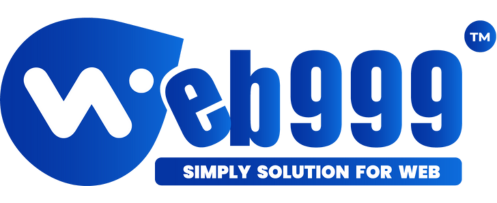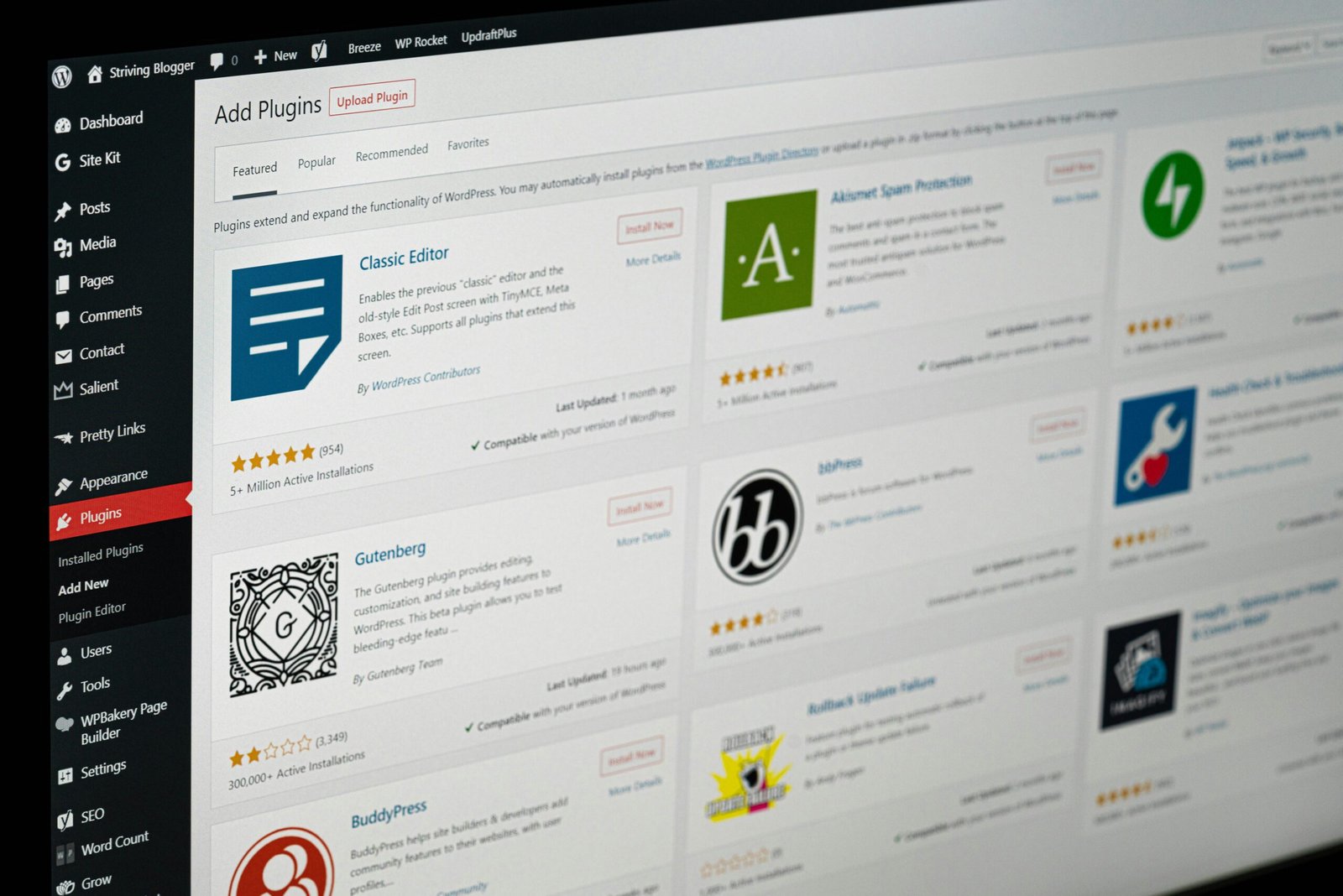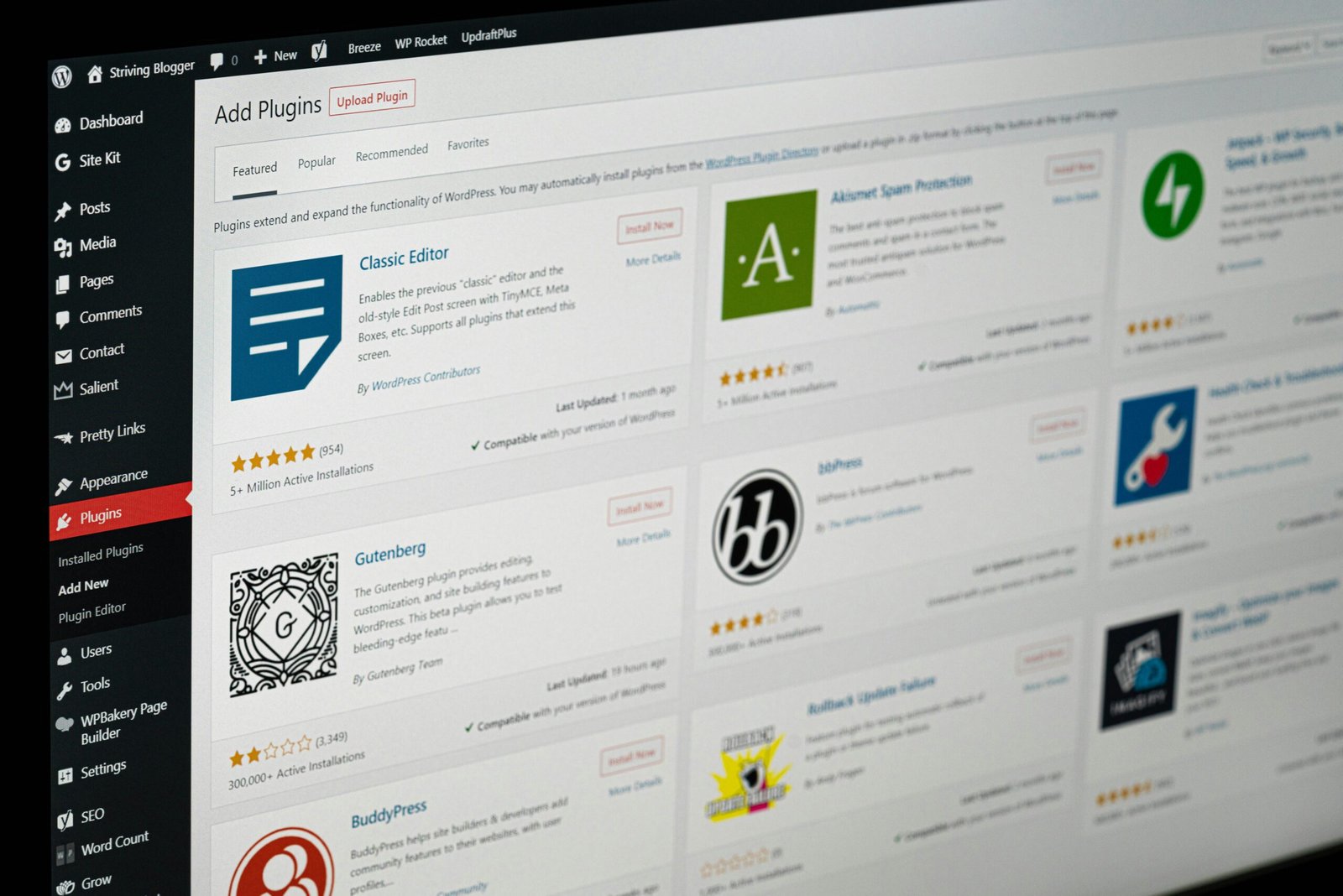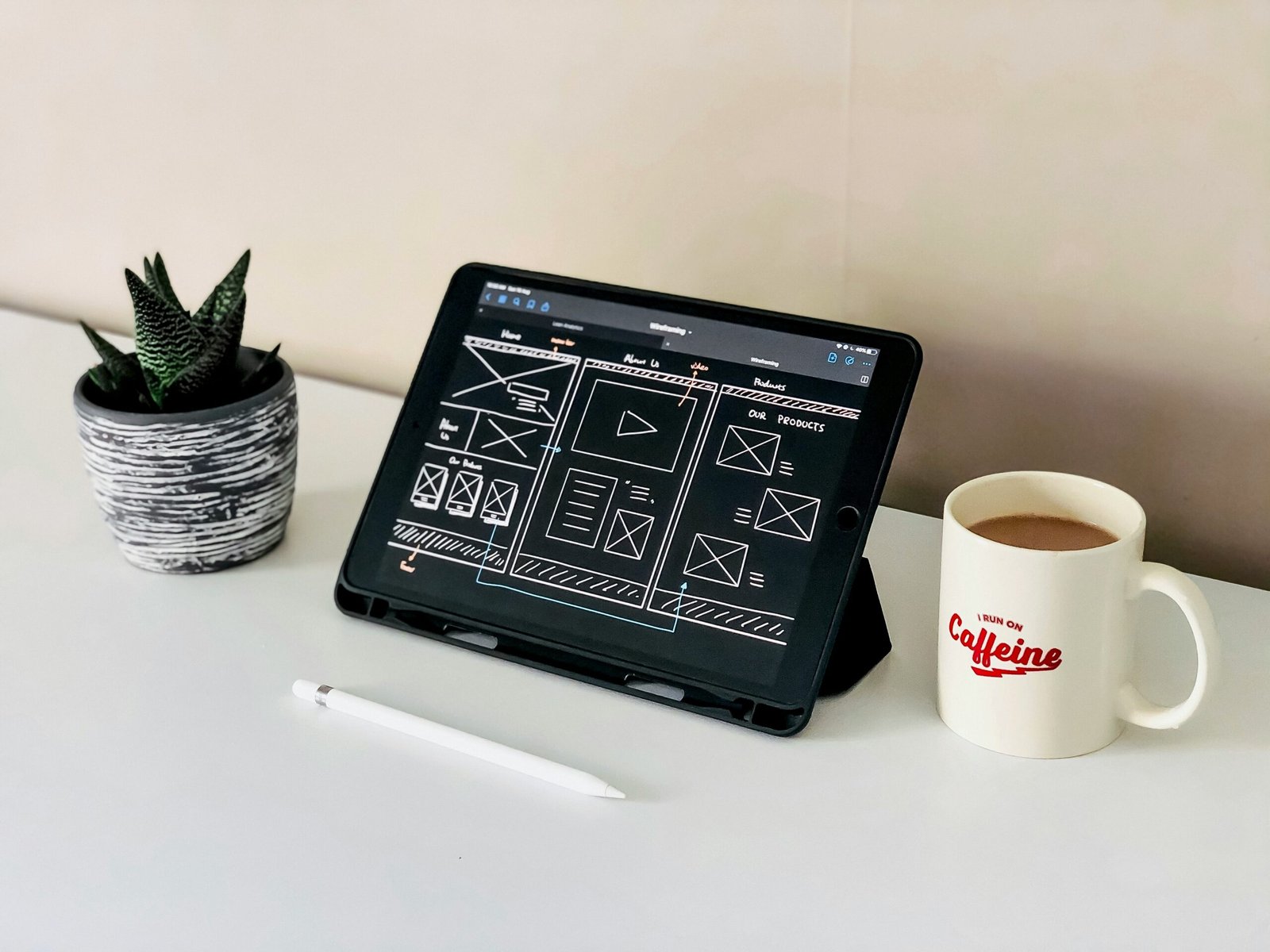Introduction to WordPress Plugins for Designers
WordPress plugins serve as essential tools that extend the capabilities of the WordPress platform, enabling designers to push the boundaries of their creativity. These plugins offer functionalities that go beyond the core features of WordPress, making it a versatile and powerful tool for web design. For designers, having the right set of plugins can significantly enhance the design process, improve overall functionality, and streamline workflows, allowing them to focus more on creativity and less on technical constraints.
In the fast-paced world of web design, staying ahead of the curve is crucial. Tools that offer time-saving features, enhanced user experience, and robust customization options can make a significant difference in the quality and efficiency of a designer’s work. This is where WordPress plugins come into play, providing a rich array of functionalities that can turn a standard website into a visually stunning and highly functional masterpiece.
The purpose of this blog post is to showcase 15 must-have WordPress plugins that can help designers unleash their full creative potential and maximize productivity. These plugins have been carefully selected based on several criteria, including usability, popularity, and design capabilities. Each plugin on this list has proven itself to be indispensable for designers who want to create visually appealing, user-friendly, and highly functional websites.
By integrating these plugins into your WordPress toolkit, you can streamline various aspects of your design process, from layout and typography to image optimization and SEO. Whether you’re looking to enhance your site’s aesthetics, improve performance, or add unique features, these plugins offer the flexibility and power needed to bring your creative visions to life. Join us as we delve into the specifics of each plugin and explore how they can elevate your design projects to new heights.
Top 5 Design Enhancement Plugins
For designers looking to elevate their WordPress sites, integrating top-notch design enhancement plugins is crucial. These tools not only streamline the design process but also offer a vast array of features to create visually stunning and responsive websites. Here, we detail five essential plugins that every designer should consider.
Elementor: Elementor is a leading page builder that offers an intuitive drag-and-drop interface, making it accessible even for those with minimal coding experience. Its extensive library of pre-designed templates and widgets allows for rapid creation of visually appealing pages. Elementor’s responsive editing tool ensures that designs look impeccable on all devices, enhancing the overall user experience.
Beaver Builder: Another powerful page builder, Beaver Builder, prides itself on flexibility and ease of use. With its front-end editing capabilities, designers can see changes in real-time, enabling fine-tuning of every element. The plugin’s compatibility with virtually any theme further adds to its versatility, making it a go-to choice for custom layouts and designs. Beaver Builder also supports advanced features like reusable templates and global rows, significantly boosting productivity.
Visual Composer: Visual Composer is renowned for its comprehensive design options. Offering both front-end and back-end editing, this plugin provides a seamless design experience. With hundreds of content elements, templates, and add-ons, Visual Composer allows for limitless creativity. Its compatibility with popular SEO plugins ensures that designs are not only beautiful but also optimized for search engines.
Divi: Divi by Elegant Themes is a highly versatile theme and page builder. Its real-time visual editor and responsive design options make it a favorite among designers. Divi’s split testing feature is particularly useful for optimizing design elements based on user behavior. Additionally, the extensive library of pre-made layouts speeds up the design process, allowing for quick and efficient site development.
Thrive Architect: Thrive Architect focuses on conversion-driven design. It offers a wide range of customizable elements and templates aimed at boosting user engagement and conversions. The plugin’s front-end editing capabilities and integration with other Thrive Suite tools make it a comprehensive solution for creating responsive and visually appealing websites.
Incorporating these plugins into your workflow will not only enhance the visual appeal of your WordPress sites but also streamline the design process, allowing for greater creativity and efficiency.
Top 5 Functionality Boosting Plugins
In the realm of WordPress, functionality is as critical as aesthetics. Designers must ensure that their creations are not only visually appealing but also efficient and user-friendly. To achieve this, integrating functionality-boosting plugins is essential. Here are five plugins that significantly enhance site performance, SEO, and user engagement.
First on the list is Yoast SEO. This plugin is indispensable for optimizing your website’s content for search engines. Yoast SEO provides real-time analysis of your content, offering suggestions to improve keyword usage, meta descriptions, and readability. By integrating Yoast SEO, designers can ensure their websites rank higher in search engine results, thereby increasing visibility and traffic.
Next, we have WPForms, a powerful drag-and-drop form builder. WPForms allows designers to create custom forms without needing extensive coding knowledge. From simple contact forms to complex survey forms, WPForms enhances user interaction, making it easy for visitors to engage with the website. This plugin is particularly useful in design projects where user feedback or data collection is essential.
For e-commerce websites, WooCommerce is a must-have. This plugin transforms a basic WordPress site into a fully functional online store. With WooCommerce, designers can create aesthetically pleasing product pages, integrate various payment gateways, and manage inventory seamlessly. Its extensive customization options allow for the creation of unique shopping experiences tailored to specific brand identities.
Another essential plugin is W3 Total Cache. This plugin improves site performance by caching static content, reducing load times, and enhancing overall user experience. A fast-loading website is crucial for retaining visitors and reducing bounce rates. W3 Total Cache is particularly beneficial for larger sites with extensive media content.
Lastly, MonsterInsights offers comprehensive analytics, integrating seamlessly with Google Analytics. This plugin provides valuable insights into user behavior, helping designers understand which aspects of their site are performing well and which need improvement. By leveraging data from MonsterInsights, designers can make informed decisions to enhance user engagement and site effectiveness.
Incorporating these plugins ensures that WordPress sites are not only visually stunning but also highly functional, engaging, and optimized for performance. By leveraging these tools, designers can elevate their projects, delivering exceptional user experiences.
Top 5 Workflow Optimization Plugins
For designers seeking to streamline their workflow and enhance productivity, integrating the right WordPress plugins can make a substantial difference. These tools can assist in managing projects, collaborating with teams, and automating repetitive tasks, ultimately saving time and reducing the complexity of design projects. Here, we introduce five essential workflow optimization plugins that every designer should consider.
Trello: Trello is an excellent project management tool that can be integrated directly into WordPress. It allows designers to create boards and cards to organize tasks, set deadlines, and track progress. By using Trello, designers can visualize their workflow, prioritize tasks, and collaborate more efficiently with team members. For example, a designer can create a Trello board for a website redesign project, assign tasks to team members, and monitor the project’s overall progress in real-time.
Slack: Communication is key in any design project, and Slack offers a seamless platform for team collaboration. Integrating Slack with WordPress ensures that all team members are on the same page, facilitating instant messaging, file sharing, and real-time project updates. Designers can create dedicated channels for specific projects, share design drafts, and receive immediate feedback, fostering a more cohesive and productive work environment.
WP Project Manager: WP Project Manager is a comprehensive project management plugin designed specifically for WordPress. It provides features such as task lists, milestones, and time tracking, enabling designers to manage their projects more effectively. With WP Project Manager, designers can break down complex projects into manageable tasks, set priorities, and monitor progress, ensuring timely completion and reducing project-related stress.
CoSchedule: CoSchedule is a powerful marketing calendar that helps designers plan, execute, and manage their content strategy. By integrating CoSchedule with WordPress, designers can schedule blog posts, social media updates, and other marketing activities in one place. This plugin enhances organization and ensures that all content is published consistently and on time, aligning with the overall project timeline.
Zapier: Zapier connects WordPress with over 2,000 other apps, allowing designers to automate repetitive tasks and streamline their workflow. By setting up “Zaps,” designers can automate actions such as sending notifications, creating tasks, and updating records across various platforms. For instance, a designer can create a Zap to automatically send a Slack message when a new Trello card is added, keeping the team informed without manual intervention.
Integrating these workflow optimization plugins into a designer’s daily routine can significantly enhance efficiency, collaboration, and project management. By leveraging the capabilities of Trello, Slack, WP Project Manager, CoSchedule, and Zapier, designers can focus more on creativity and innovation, rather than getting bogged down by administrative tasks.







